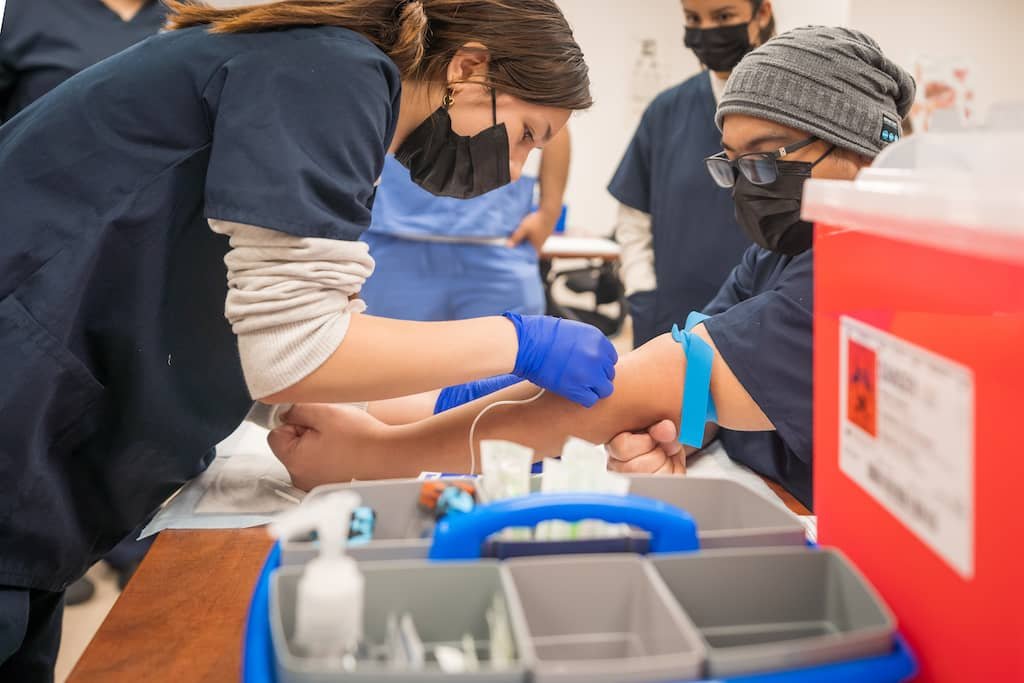Ensuring Adequate Supply of Personal Protective Equipment (PPE) in Hospitals During Infectious Disease Outbreaks
Summary
- Hospitals must have a strategic plan in place to ensure an adequate supply of personal protective equipment (PPE) during infectious disease outbreaks.
- In order to maintain a sufficient stock of PPE, hospitals must regularly conduct inventory assessments, establish strong supplier relationships, and implement effective Supply Chain management practices.
- Proper training must also be provided to staff on the correct use and disposal of PPE to prevent shortages and ensure the safety of healthcare workers and patients.
Introduction
Personal protective equipment (PPE) plays a critical role in protecting healthcare workers from Infectious Diseases, such as Covid-19. During outbreaks, the demand for PPE spikes, leading to shortages and putting healthcare workers at risk. Hospitals must take proactive measures to ensure they have an adequate supply of PPE to protect their staff and patients.
Inventory Assessments
One of the key measures hospitals take to ensure they have enough PPE during infectious disease outbreaks is conducting regular inventory assessments. By keeping track of their PPE stock levels, hospitals can identify any potential shortages and take action to replenish their supplies. Inventory assessments also help hospitals determine which types of PPE are in high demand and allocate resources accordingly.
Establishing Supplier Relationships
In addition to monitoring their inventory levels, hospitals must establish strong relationships with reliable suppliers to ensure a steady supply of PPE. By working closely with suppliers, hospitals can secure priority access to PPE during times of high demand. It is essential for hospitals to diversify their supplier base to mitigate the risk of shortages due to disruptions in the Supply Chain.
Implementing Supply Chain Management Practices
Effective Supply Chain management is crucial for hospitals to maintain an adequate supply of PPE during infectious disease outbreaks. This includes monitoring demand trends, optimizing inventory levels, and implementing just-in-time inventory practices to prevent stockouts. Hospitals must also have contingency plans in place to address any disruptions in the Supply Chain and quickly source alternative suppliers if needed.
Staff Training
Ensuring that staff are properly trained on the correct use and disposal of PPE is essential to prevent shortages and protect healthcare workers and patients. Hospitals must provide comprehensive training on how to properly don, doff, and dispose of PPE to minimize the risk of contamination and ensure its effectiveness. Regular refresher training sessions should be conducted to reinforce best practices and address any issues or concerns raised by staff.
Conclusion
During infectious disease outbreaks, hospitals must take proactive measures to ensure they have an adequate supply of personal protective equipment to protect their staff and patients. By conducting regular inventory assessments, establishing strong supplier relationships, implementing effective Supply Chain management practices, and providing proper training to staff, hospitals can mitigate the risk of PPE shortages and safeguard the health and safety of all those within their care.

Disclaimer: The content provided on this blog is for informational purposes only, reflecting the personal opinions and insights of the author(s) on the topics. The information provided should not be used for diagnosing or treating a health problem or disease, and those seeking personal medical advice should consult with a licensed physician. Always seek the advice of your doctor or other qualified health provider regarding a medical condition. Never disregard professional medical advice or delay in seeking it because of something you have read on this website. If you think you may have a medical emergency, call 911 or go to the nearest emergency room immediately. No physician-patient relationship is created by this web site or its use. No contributors to this web site make any representations, express or implied, with respect to the information provided herein or to its use. While we strive to share accurate and up-to-date information, we cannot guarantee the completeness, reliability, or accuracy of the content. The blog may also include links to external websites and resources for the convenience of our readers. Please note that linking to other sites does not imply endorsement of their content, practices, or services by us. Readers should use their discretion and judgment while exploring any external links and resources mentioned on this blog.

